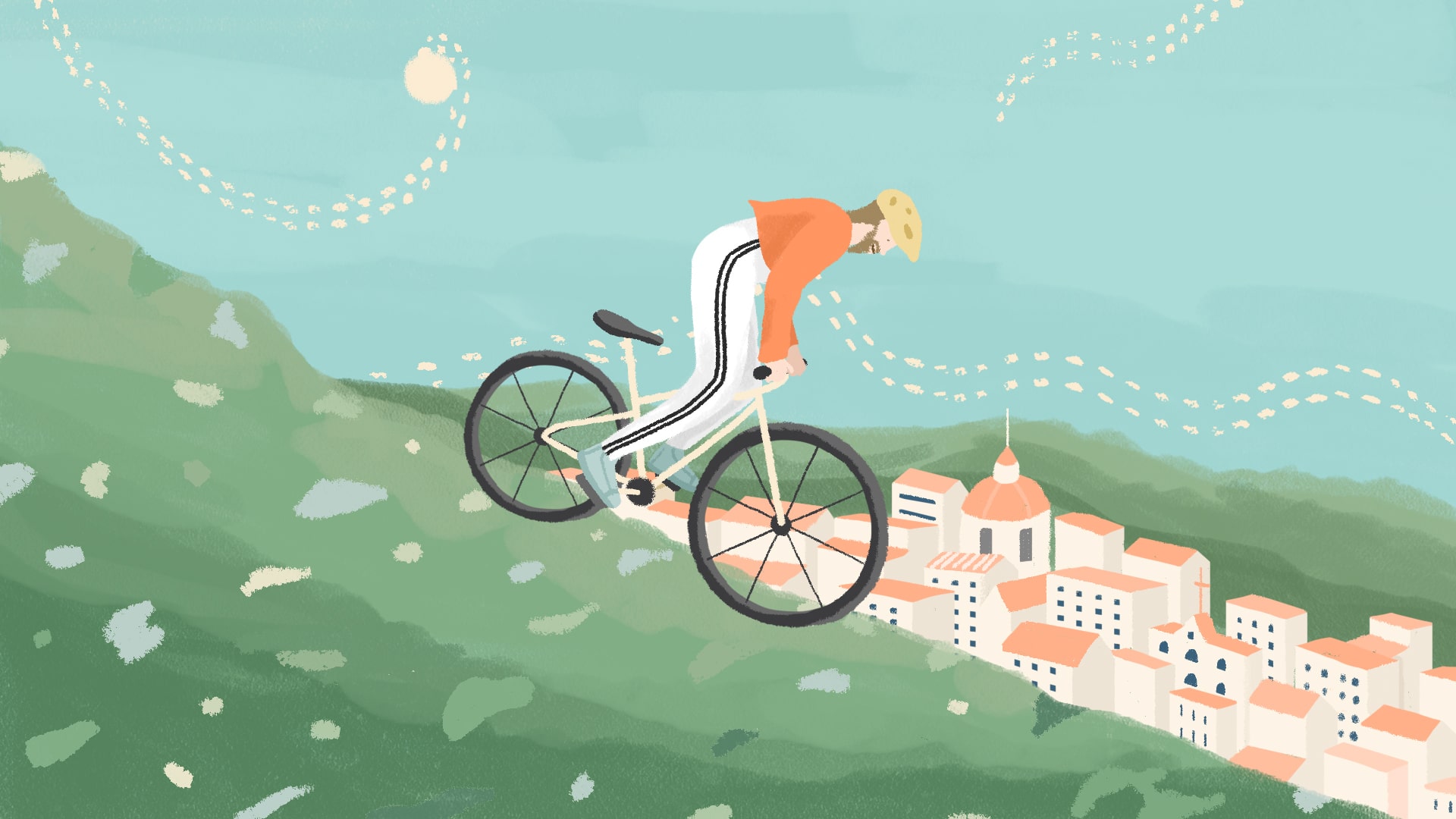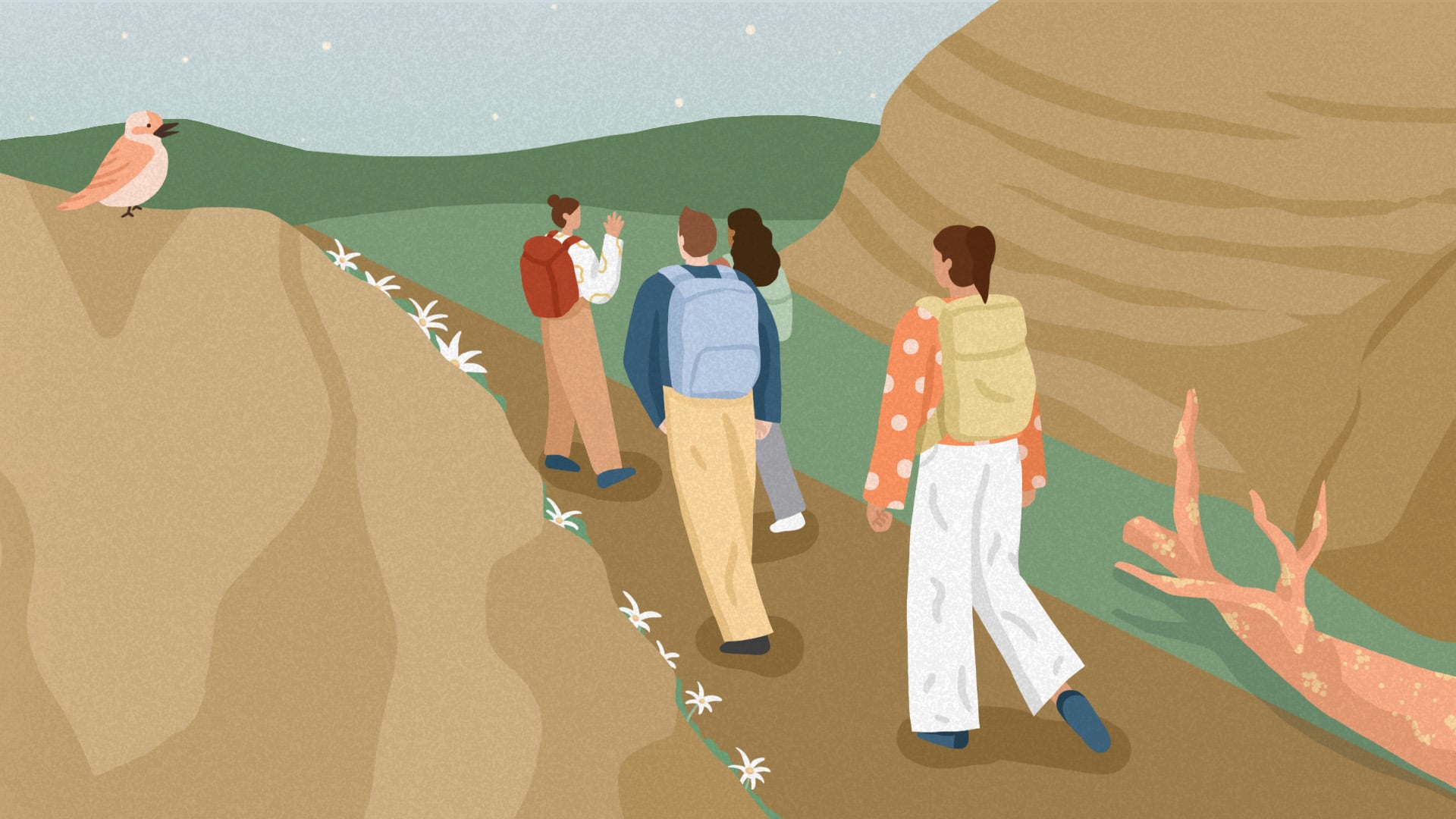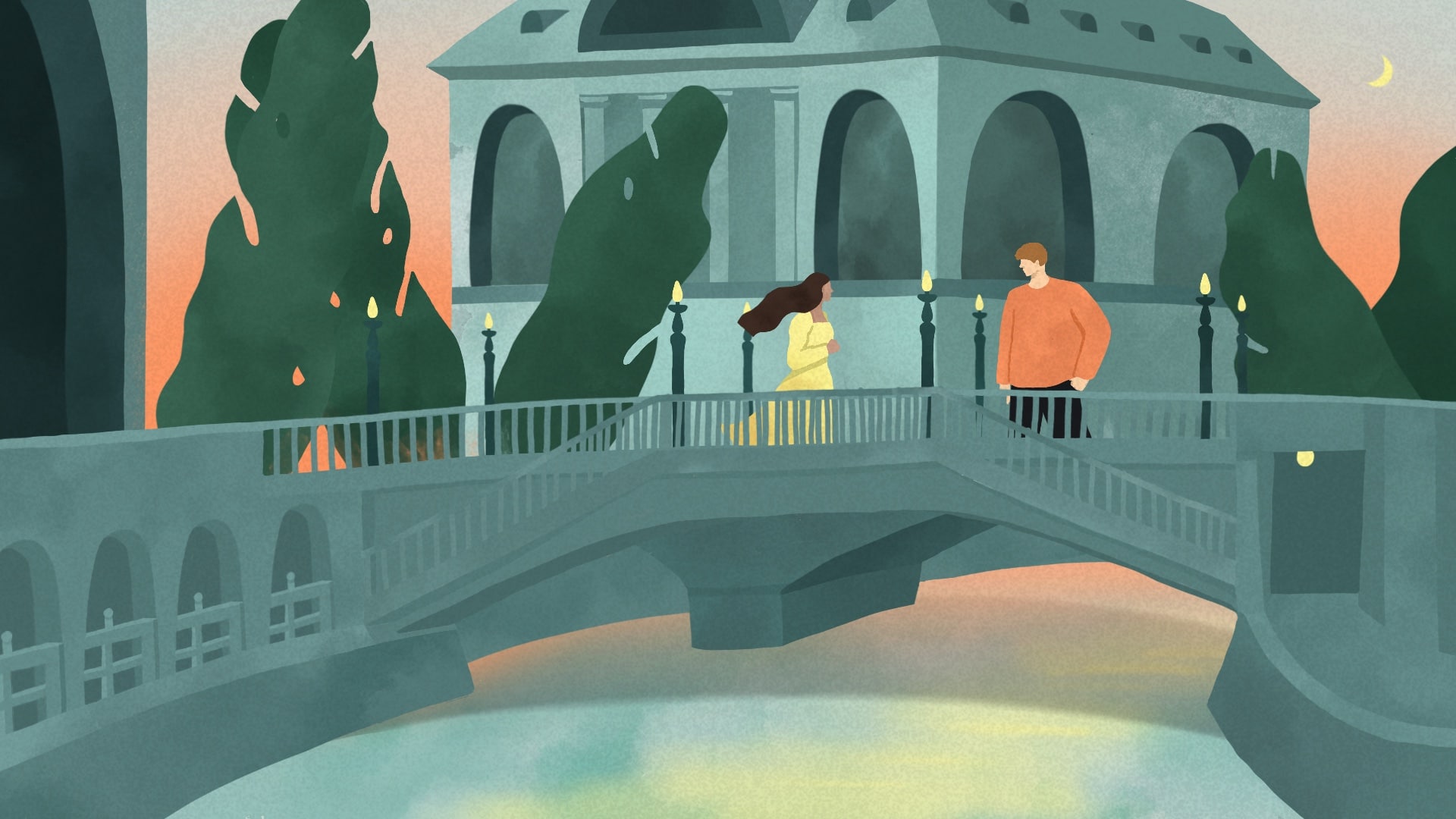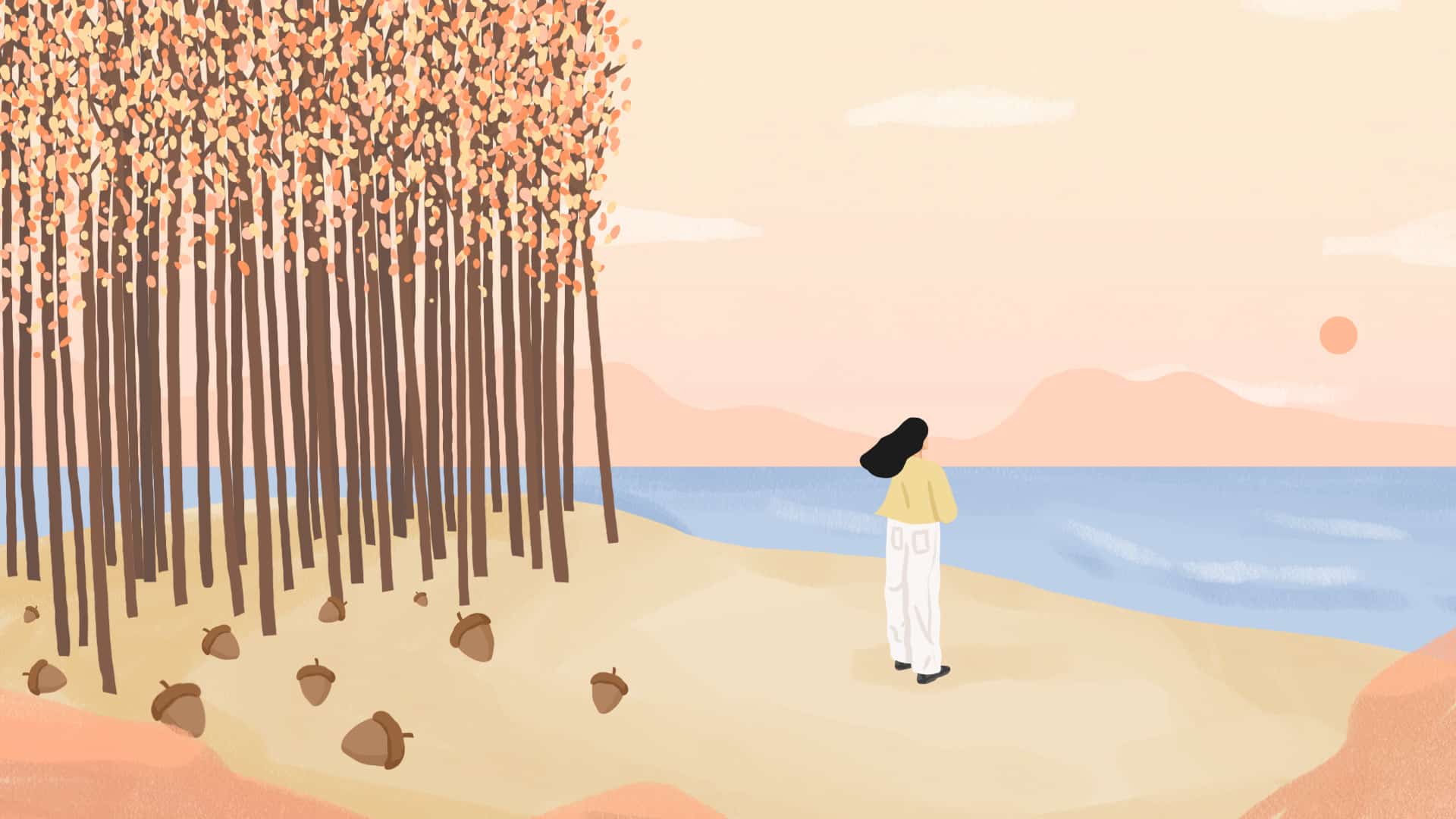
(Illustration: Yeji Kim)
ViewpointsHow Solo Travel Led to Self Love One Epic Autumn in South America
By Dana TerAutumn in the Southern Hemisphere hits a little differently. In Playa Zapallar, a popular Chilean vacation spot two hours west of Santiago, the season carries a perpetual mist through the woodland forest flanking the beach. The trees, flushed red and orange, stretch toward the sky, and acorns the size of pineapples litter the ground.
It was my third month of solo travel through South America, and on this cold, wet, late-April day, I ventured past Zapallar’s main beach, scaling gray-brown rock outcrops along the silvery, temperamental South Pacific Ocean. Orange and yellow succulents, creeping like vines, covered entire rocks — a sight I had never seen before.
I was becoming more attuned to my surroundings during these solitary walks. In that moment, I observed a pelican tuck its beak in its furry chest, then noticed droplets hitting the water and looked up at the sky. The mountains behind the beach, normally a regal green, were barely visible. I smiled — down came the storm.
As I watched the pelican, a wave of pride washed over me. I had made it to this amazing continent by (mostly) my own wits, and the unexpected storm now reminded me that there are forces out there bigger and more powerful than myself.
Earlier this year, when I announced to friends and family that I planned to travel solo around South America for three months, I was initially met with worry — fears that a female solo traveler would face dangers traveling alone.
It was my first time in South America and my first time traveling solo for an extended period of time. When I was growing up in Asia, South America seemed like a distant and inaccessible place, one that existed only as myth, like the legend of El Dorado.
Still, I was curious, reading Isabel Allende’s books, which painted the continent as bursting with magic, from its myriad cultures and varied natural landscapes to its tumultuous political history and people of eclectic backgrounds.
For decades, the continent called out to me, but there were always excuses not to go. No one to travel with. Too far. Too unknown. At 33, I felt confident in my solo travel experience and had no reason to keep waiting for someone to travel with me. I took the plunge and spent a month learning Spanish while plotting my trip, which I hoped would take me from Colombia to Uruguay and, ultimately, Chile.
Then anxiety hit. Where would I live when I returned? Where would I settle down? Should I continue being a travel writer or write books?
A good friend I had met in Sicily calmed me down.
“Just go to South America, and things will figure themselves out.” She and other female friends who had also traveled to South America alone reassured me that I would be fine. “You’re going to have a real adventure!” they promised. And so I departed.
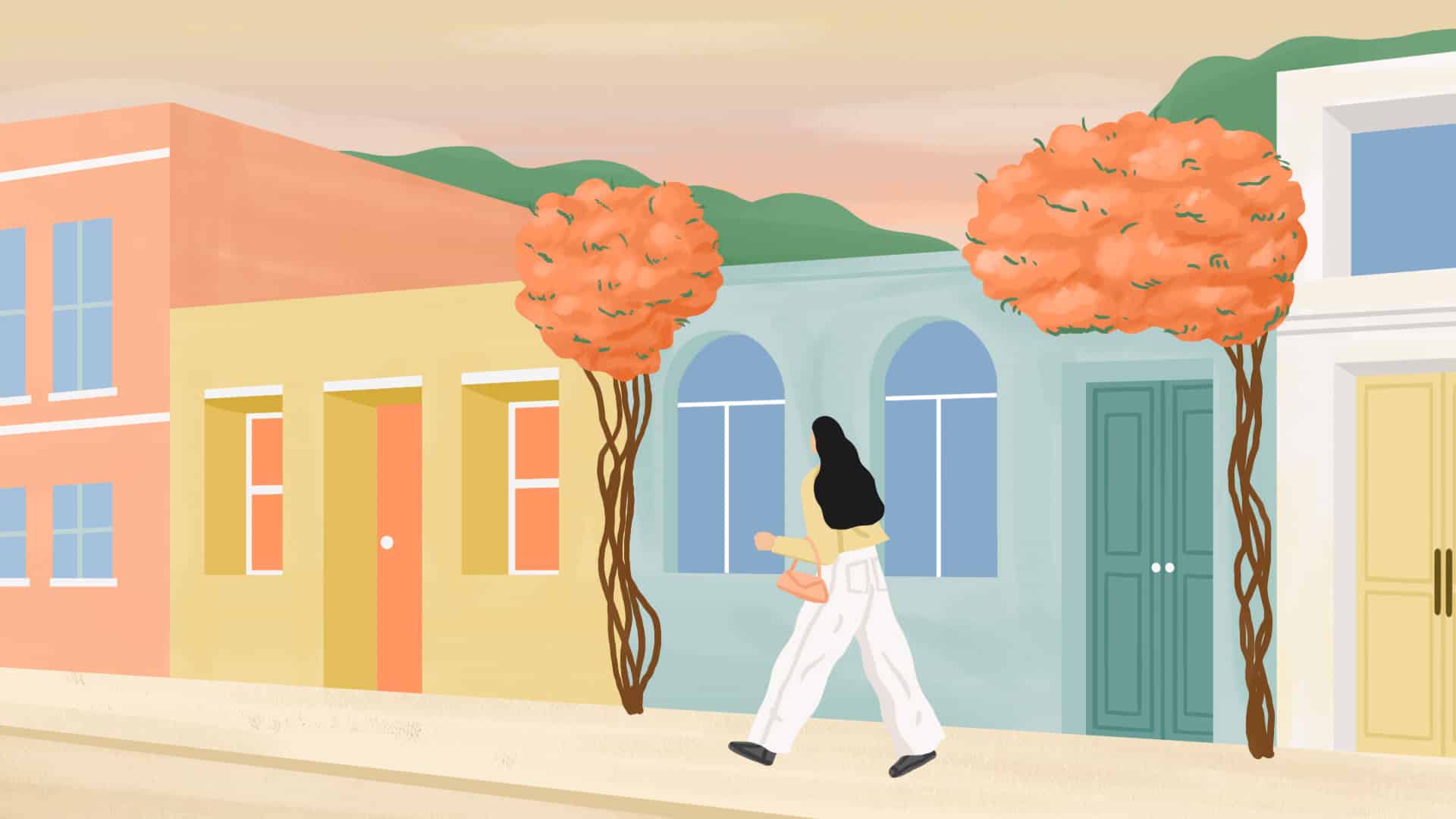
Two weeks into my stay in Colombia, a bird pooped on my head. It happened suddenly and without pretense. Before the interruption, I had been drinking my morning coffee at a restaurant in the coastal town of Santa Marta. Now, watery-brown goop was sliding down my hair — and the customers and staff at the restaurant were nothing short of ecstatic. “You will have good luck,” they marveled.
Indeed, good luck followed me as autumn unfolded. In the Valle del Cocora, I drank Colombian coffee among the tallest wax palm trees in the world. Another day, I enjoyed a walk in the heart of Colombia’s Coffee Triangle, heading from Las Acacias Coffee Farm back to the town of Salento. I meandered along a dirt road that passed by farms with grazing cows.
I remained vigilant on these solo treks, and the act of walking ultimately rid my mind of anxieties and created room for introspection.
In Colonia del Sacramento, Uruguay, I walked alongside a marsh by the Río de la Plata and saw trees with flat tops and broad branches that twisted and turned in unimaginable directions. It was the throes of autumn, but it felt more like spring.
I spent days wandering this storybook town — walking past homes draped with flowered vines and along sidewalks dotted with purple flowers dashed with a hot-pink so bright the petals appeared tie-dyed. The scenery looked like passages in Isabel Allende’s magical-realism novels had come to life.
By then, I knew enough Spanish to conduct daily activities. I bought yellow dragon fruit and shellfish empanadas from local grocers. I ate three meals a day on my own and realized something unexpected: I enjoyed my own company. In fact, I looked forward to dining alone.
As the weather grew colder and I took out warm coats from my luggage, I became happier.
And back here in Playa Zapallar, after the deluge on the beach, I found a restaurant with a fireplace and enjoyed dining solo, drinking locally made carménère wine to accompany the meal — my soaking-wet coat and scarf drying near the crackling flames.
I recalled my many adventures over the past months and found myself thinking in Spanish about the beaches, mountains, deserts and vineyards I saw in Chile — a long sliver of a country, which stretches along the South American continent like a tightrope.
“Largo pétalo de mar y vino y nieve.” A long petal of sea and wine and snow, as the Chilean poet Pablo Neruda penned.
I didn’t stay for Chile’s first snowfall, though I returned home to Southeast Asia feeling immense calm. Three months of solo travel amid South America’s varied landscapes of coastal forests and flower-filled old towns gave me the chance to notice nature’s little details — the curvature of a vine, the hue of a flower — that I wouldn’t have otherwise seen.
In these sweeping sceneries, I learned to give in to nature, embrace the idea of a greater force and, slowly but surely, love and trust myself.





